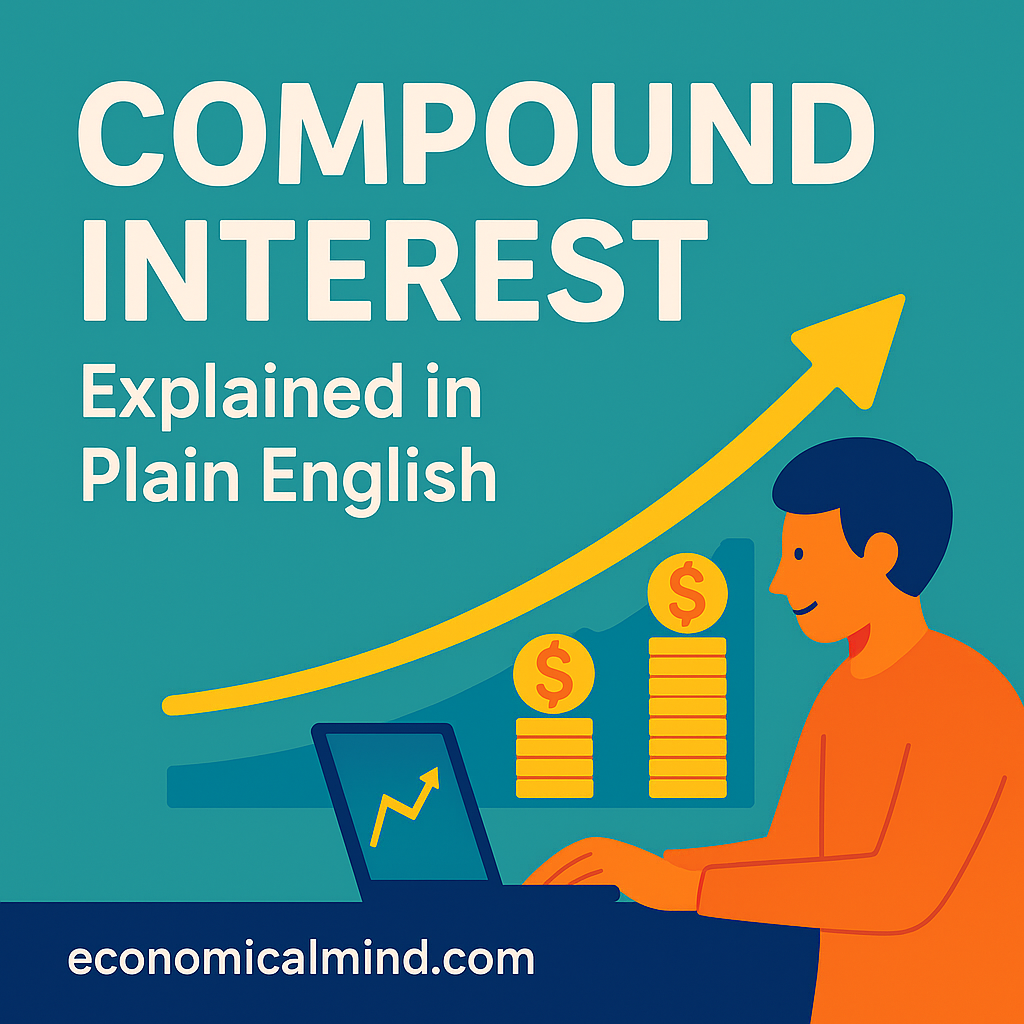
Why Compound Interest Matters
Compound interest is often called the eighth wonder of the world — and for good reason.
It’s how ordinary savers become millionaires over time, without needing huge salaries or risky investments.
Simply put, compound interest means earning interest on your interest.
Your money grows faster the longer you leave it invested — turning time into your greatest financial ally.
Step 1: The Basic Idea — Interest on Interest
Let’s break it down in plain English.
When you earn interest, it adds to your balance. Then the next time interest is calculated, you earn interest on that new, larger balance.
That’s compounding.
Example:
You invest $1,000 at 10% interest per year.
- End of Year 1: $1,100
- End of Year 2: $1,210
- End of Year 3: $1,331
After 10 years, that $1,000 becomes $2,593 — all without adding another dime.
Step 2: Understand the Compound Interest Formula
The math behind compound interest looks like this:
A = P(1 + r/n)ⁿᵗ
Where:
- A = final amount
- P = starting principal
- r = annual interest rate (as a decimal)
- n = number of times interest compounds per year
- t = number of years
But don’t worry — you don’t need to memorize it.
All you need to remember is:
👉 The more often your interest compounds, and the longer it grows, the bigger the payoff.
Step 3: Start Early — Time Is Everything
Time is the most powerful part of compounding.
If you invest $200/month starting at age 25, you could have over $500,000 by age 65 (assuming 7% annual return).
If you wait until 35, you’d need to save twice as much to catch up.
The earlier you start, the less money you have to invest — because time does most of the heavy lifting.
Step 4: Reinvest Your Earnings
To make compound interest work its magic, don’t withdraw your earnings.
Instead, let them reinvest and build upon themselves.
Examples of where compounding works best:
- Savings accounts (with regular deposits)
- 401(k)s and IRAs
- Dividend reinvestment plans (DRIPs)
- Index funds or ETFs
Reinvesting dividends and interest keeps the snowball rolling — and over decades, that snowball becomes an avalanche.
Step 5: Compounding Frequency Matters
The more often interest is compounded, the faster it grows.
For example:
- Annually: Once a year
- Quarterly: 4 times a year
- Monthly: 12 times a year
- Daily: 365 times a year
A 5% interest rate compounded daily earns slightly more than the same rate compounded annually.
It’s a small difference at first — but a huge one over decades.
Step 6: Apply It to Debt (The Reverse Effect)
Compound interest isn’t always your friend — it works against you with credit card debt and loans.
If you owe $5,000 at 20% interest and only make minimum payments, interest compounds against you — and the balance can grow even as you pay.
Lesson:
Compound interest is powerful in both directions.
Use it to grow wealth, not debt.
Step 7: Automate and Stay Consistent
Consistency beats intensity in the long run.
You don’t need to invest thousands — just automate small regular contributions to a savings or investment account.
Even $50 a week compounds into big results over time.
Set it, forget it, and let compound interest do its work quietly in the background.
Bonus Tip: Use a Compound Interest Calculator
To see compounding in action, try a free online calculator like those from Investor.gov or Bankrate.
Enter your starting balance, monthly contribution, and interest rate — then watch how your money grows exponentially over time.
It’s the easiest way to stay motivated when saving feels slow at first.
Final Thoughts
Compound interest is the engine of wealth creation.
By starting early, reinvesting your earnings, and staying consistent, you can turn small savings into long-term financial freedom.
The secret isn’t luck or timing — it’s time and patience.
Start now, and let compounding work for you, not against you.
